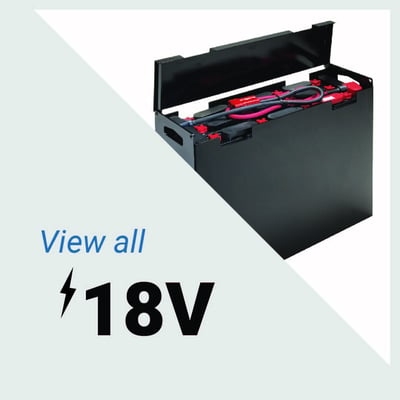
Charging Techniques for Lead Acid Forklift Batteries
Lead acid batteries are the backbone of many industrial operations, particularly in the realm of material handling. These robust power sources are integral to the functionality of forklifts, ensuring they can perform effectively in warehouses and other heavy-duty environments. However, just like any other battery type, they require proper care and charging techniques to maximize lifespan and efficiency.
Charging Techniques for Lead Acid Forklift Batteries
When it comes to charging lead acid forklift batteries, there's more involved than simply plugging them into a charger. Understanding the nuances of charging techniques can significantly impact battery performance, longevity, and safety. Here’s an in-depth look at some effective methods for charging these essential power sources.
Understanding the Basics of Lead Acid Batteries
Before diving into specific charging techniques, it's crucial to grasp how lead acid forklift batteries function. A lead acid battery consists of lead dioxide (PbO2) as the positive plate, sponge lead (Pb) as the negative plate, and a diluted sulfuric acid solution as electrolyte. The chemical reaction between these components generates electrical energy.
The Importance of Proper Charging
Improper charging can lead to several issues such as sulfation (a buildup of lead sulfate crystals), reduced capacity, overheating, and even complete failure. Therefore, understanding correct charging practices is vital for maintaining optimal performance.
Charging Options Available for Lead Acid Forklift Batteries
There are several ways to charge lead acid forklift batteries effectively:
- This is the most common method where the battery is charged at a constant current until it reaches a specific voltage level.
- It typically takes 8-12 hours depending on the size and state of discharge of the battery.
- Fast chargers provide higher currents which significantly reduce charge time to about 1-3 hours.
- While convenient, fast charging can cause increased heat generation and may accelerate wear if done too often.
- This technique involves recharging forklift batteries when they are not in use.
- It allows operators to maintain consistent battery levels without prolonged downtime but requires careful monitoring to prevent overcharging.
- An equalization charge is used periodically (typically once every month) to balance out cell voltages within a multi-cell battery pack.
- This process helps mitigate sulfation and ensure that all cells maintain similar capacities.
- Trickle chargers provide a low steady current that keeps batteries topped off after they have been fully charged.
- This method helps prolong battery life by preventing self-discharge during periods of inactivity.
Key Considerations When Charging Lead Acid Forklift Batteries
While choosing 72 volt flat plate forklift batteries a charging technique is essential, there are several factors you should consider:
-
Temperature Control: Charging should ideally be done at temperatures between 60°F (15°C) and 100°F (38°C). Extreme temperatures can affect performance and safety.
-
Water Levels: Regularly check water levels within your battery cells; low water levels can cause damage during charging. Always refill with distilled water if needed before beginning a charge.
-
Ventilation: Ensure adequate ventilation while charging since hydrogen gas can be emitted during the process—this gas is flammable!
-
Charging Equipment: Use chargers specifically designed for lead acid batteries as improper equipment can lead to malfunction or even catastrophic failures.
Best Practices for Maintaining Lead Acid Forklift Batteries
Adopting best practices not only ensures efficient operation but also prolongs battery life:
Frequent Inspections: Regularly inspect batteries for physical damage and corrosion on terminals.
Cleanliness: Keep terminals clean; dirt or grime can create resistance leading to inefficient charging or discharging.
Avoid Deep Discharges: Deep discharging can shorten battery life; try not to let your forklift run down below 20% state-of-charge if possible.
Charge After Each Shift: For optimal performance, recharge your forklift batteries after each use—this routine prevents excessive depletion.
Documentation: Maintain records of charging cycles and maintenance performed; this data will help track performance trends over time.
FAQs About Charging Techniques for Lead Acid Forklift Batteries
Here are some frequently asked questions regarding how to properly charge lead acid forklift batteries:
1. What happens if I overcharge my forklift battery?
Overcharging can cause excessive heat generation leading to electrolyte loss through evaporation or boiling, potentially damaging the internal components permanently.
2. How do I know when my battery is fully charged?
Most modern chargers come equipped with an automatic shut-off feature or indicator lights that signal when the charge cycle is complete based on voltage readings.
3. Can I use any charger for my lead acid forklift batteries?
No! Always use chargers specifically designed 24 volt flat plate forklift batteries for lead acid batteries as they regulate voltage properly; using incorrect chargers could result in inefficiency or damage.
4. Is it safe to charge my battery indoors?
Yes, but ensure good ventilation due to potential hydrogen gas emissions during charging processes—always monitor your setup closely!
5. How often should I perform equalization charges?
Generally recommended once per month unless otherwise specified by your manufacturer guidelines—it helps ensure balanced cell performance across your battery bank!
6. What type of water should I add if needed?
Always use distilled or deionized water when topping off battery cells—tap water contains minerals that could harm your internals over time!
Conclusion
80 volt flat plate forklift batteriesIn summary, effective management of your lead acid forklift batteries involves understanding 48 volt flat plate forklift batteries various charging techniques tailored specifically for their needs—be it standard methods or faster alternatives like opportunity charges! By adhering strictly to best practices while keeping safety considerations top-of-mind throughout each step taken along this journey ensures optimal results at every turn! With knowledge gained from this article under your belt—you're now better prepared than ever before!


